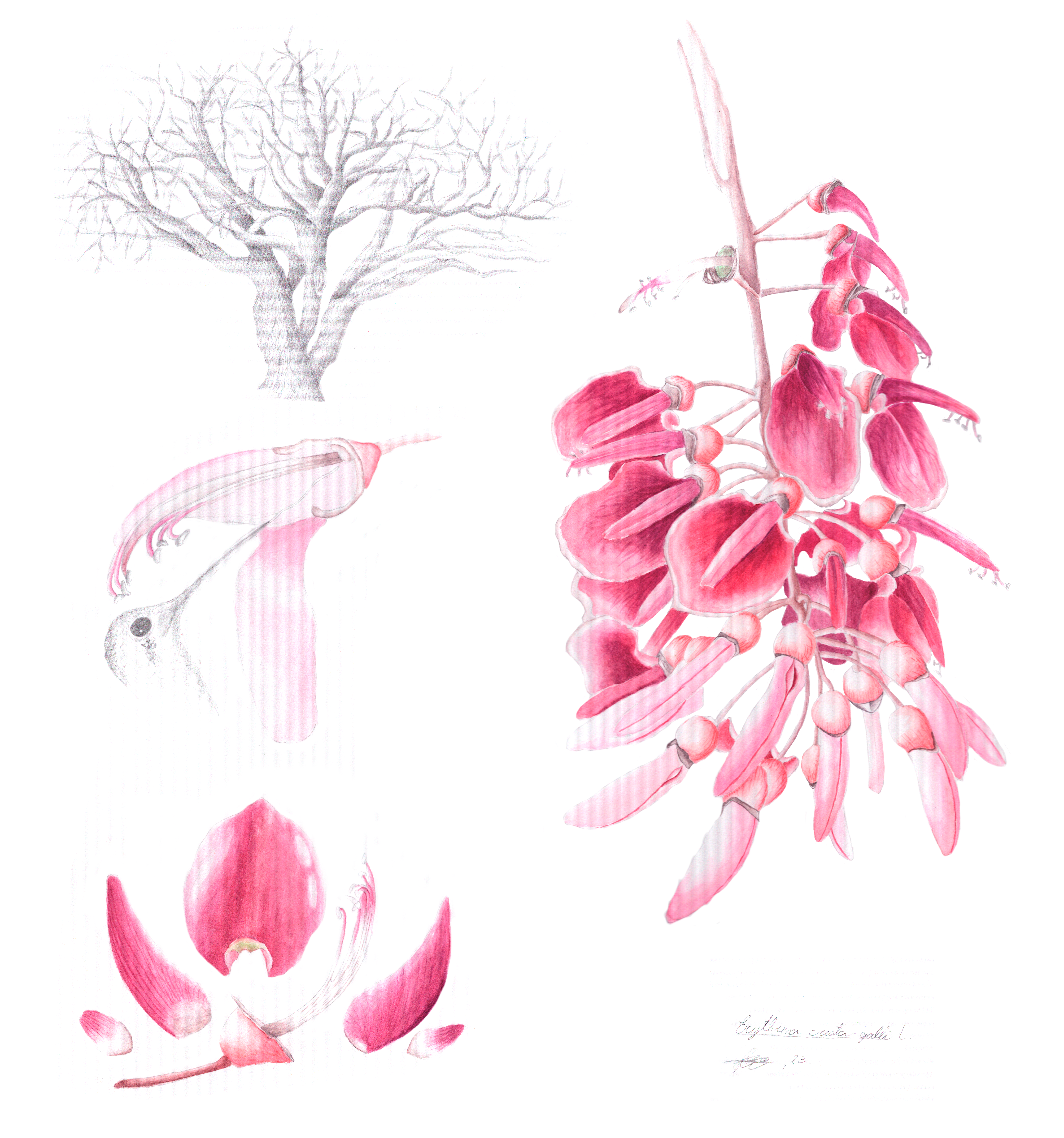ARTIST SPOTLIGHT: JOÃO AUGUSTO CASTOR SILVA
João Iganci (Universidade Federal de Pelotas, Brazil)
João Augusto Castor Silva is from Minas Gerais, Brazil. He was born in 1996 and started in the world of arts from the age of 13-14, when he made his first tattoo. He graduated from the Faculty of Plastic Arts at Escola Guignard (UEMG) in 2014 and, in 2018, completed and defended his qualification in woodcut engraving. Currently studying a Bachelor’s degree in Biological Sciences at Universidade Federal de Pelotas, he develops research in arts and science for the "Pampa Singular" project and the Scientific Illustration Center (NIC) for science outreach, under the supervision of Prof. João Iganci, who is also a leguminologist.
The name Erythrina L. comes from the Greek word "erythros" meaning "red," and referring to the color of its showy petals. Erythrina crista-galli L. is a tree species that can reach up to 20 meters high and 80 centimeters in diameter. It is found in wetlands in the central and southern parts of South America, with records in Argentina, Bolivia, Brazil, Paraguay, and Uruguay. It has a twisted trunk covered in a thick, corky bark. Its branching is dichotomous, and it has curved and flattened spines on the branches and leaves, which are trifoliolate. The pseudoracemose inflorescences are erect or curved, with numerous flowers. The flowers have five petals of different sizes, which gives the flowers bilateral symmetry. The ressupinated standard (basal petal in this case) is wide and oval and provides support for two elongated and fused keels that function to bring the stamens closer together, as well as two reduced, free wings. The fruits are dehiscent legumes with a green color when immature and dark brown when mature. The seeds are also dark brown and oblong. It has a monoecious sexual system, and only 6% of its flowers develop seeds. Its main pollinators are hummingbirds and bees, and its nectar is abundant, slightly viscous, and odorless.
